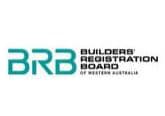Painting Your House
Painting the interior walls of your house can be an inexpensive way to make a dramatic change to the look and feel of your home or freshen up an old worn look. If you haven’t yet decided to pull out your own roller or hire a professional home painter, here are some points to consider.
Note: Safety first. If you decide to do it yourself be sure to take safety seriously. Always wear safety glasses to protect your eyes from stray paint and make sure the room you are painting is adequately ventilated. Paint fumes are toxic and can make you sick. Keep windows and doors open, even when you are finished in the room and lettings it dry. Be sure to use a paint mask or a respirator mask if fumes are particularly strong.
While the benefits of DIY could mean you save a lot of money, this may depend on the complexity of the job and the equipment you may need. House painting jobs require a lot of materials; protection sheets and drop sheets, brushes, rollers, extension poles, masking tape, buckets, ladders, cleaning fluids, sandpaper, primers and crack filling compound, just to name a few – Accounting for the expense of these purchases is commonly missed.
Another area of consideration for DIY vs Pro; Workmanship.
Painting a house requires a certain level of skill and proficiency. A poor finish will require maintenance sooner that should be required and a sloppy job is something you will have to endure for a while – or until you get a professional in to fix up the job.
Other considerations may just be accessibility; if you are painting the exterior of your house then access to the higher walls may be a problem only solved with ladders. If you have a two storey house you may even require scaffolding. A professional can give you a quote on these services before commencing a job. They will also be able to outline the foreseeable issues or hurdles they’ll have to overcome to complete the job.
Finally, clean up and disposal are also frequently overlooked when doing a DIY house painting project. A lot of unused paint and cleaning chemicals cannot simply be poured down the drain and professional clean-up is usually required on DIY projects.
Whether you decide to pay a professional residential painter or to paint your house yourself, here’s how the professionals go about it:
STEP 1: Planning
Painting a whole house is all about preparation. Considering it may take a few days to complete the house, you must have a plan before starting the project. Whether you are painting it yourself or hiring a professional, disruptions to your everyday living arrangements will occur. Plan to move your bed into another room to sleep after you have your bedroom painted as pant fumes may still be strong enough to disrupt your sleep. Be prepared to move your dining table and other large heavy items of furniture during the painting process.
The professionals will use canvas drop cloths that are both extremely durable but also absorbent – important if they are to prevent the spread of stray paint and paint spills. Amateur house painters typically use plastic drop sheets because they are very cheap. Plastic is however, not absorbent and will only spread the paint around, leaving either pools of wet paint to gather or allowing paint to roll off the plastic edges.
STEP 2: Prep your Walls
Paint will not cover cracks, holes or dents and so these will need to be filled and prepared long before you crack open your first paint tin.
Cracks or imperfections are filled with a spacking compound with a putty knife and allowed to dry. This is then later sanded, typically starting with a 220 grit sandpaper, till the putty is back flush to the original wall surface.
Sanding will create a considerable amount of dust, so take precautions to protect both your lungs and the furniture in your home. Wear a dust mask and cover or drape furniture with old sheets or painters drop cloths.
Once sanded smooth, walls should be dusted and cleaned with a damp, low static towel to ensure no dust particles contaminate the paint.
Step 3: Priming your Walls
Primers are used in areas where you may need to seal the wall i.e. in the bathroom to prevent mould. Primers are also good if you are painting over a darker colour. Since painting over a darker colour wall requires more coats of paint primers that are coloured similarly to your paint colour are a cheaper more economical option to wasting your paint on undercoats.
After priming allow the wall to completely dry. Once dry sand again using a very fine grit sandpaper until the wall is smooth and flawless. Any visible imperfections at this stage will only be amplified by the sheen of the top coat, so it is important to take care and use diligence at this step.
Then wipe the wall clean of any dust particles with a damp cloth and allow time for it to air dry.
STEP 4: Masking Off
Masking off a room means covering with masking tape the surfaces that you do not wish to paint. The professionals don’t use any old masking tape, they use painters’ masking tape.
Masking off can be the most time consuming part of painting your house.
Normal masking tape typically used for crafts and packing can “bleed” (leak paint at the edges) and producing an uneven line. Normal masking tape can even pull paint off the surface as you remove it.
Painters tape is designed not to do this. Painters tape comes in different adhesion levels so as to match the surface they are being used on. The last thing you want is to finish painting only to remove your masking tape and pull the paint off the delicate surface you were trying to protect. Some painters’ tapes are also designed to be used on textured surfaces.
STEP 5: Cutting in
Cutting in means to paint the edges all around the room before switching to the roller to do the large flat surfaces. Painting the edges of a room with a smaller brush first will make it easier to be accurate where you do not want uneven overlaps like at a doorframe or a feature wall.
Cutting in is usually done with a smaller “cutting-in” brush and may vary in size and shape depending on the painter’s needs. These brushes are typically 2-3 inches wide or can be shaped to conform to corners between walls, corners, ceilings, doorframes and hinges.
Brushing first onto the wall before overlapping the tape is good practice to ensure you don’t introduce too much paint from a drenched brush onto the tape. This will reduce the risk of oversaturating the tape and reduce paint bleed.
A professional will usually use two people, one cutting in while another rolls, this is so they don’t allow the cut in to dry before rolling. Letting the cut in line dry before rolling the rest of the wall will not allow the paint to blend and can lead to a slight difference in sheen of the two coats. Having one person cut in while a partner follows with the roller will ensure the paint goes on wet and help it blend together, creating a seamless colour between wall to edges.
STEP 6: Painting
Finally you are ready to paint.
But first, be sure you have covered everything appropriately. Some stray paint on that expensive couch or a bucket spill on your hardwood floors could spell catastrophe. Go back to step 1 and check your drop sheets, tape them down if you need too. Then recheck your masking in step four.
Next, before you actually put paint to wall, you have to also prepare your paint.
Be sure to re-mix or stir you paint, a basic mixing stick is all you need, to ensure even paint uniformity if it has been sitting for a while.
Also, if you are using multiple paint tins you could also use a technique called “boxing” to ensure colour uniformity across pain tins. Even small variations from batch to batch may be noticeable once on the wall.
Boxing means mixing your paint in a larger container before using it. This can also be repeated when the paint level gets low, mixing in paint from a different batch once you have used a couple of litres of paint. This refill and re-mix acts as a fail-safe for colour uniformity and can be good on large painting projects.
Ok, on to the actual painting!
- Using a roller and rolling pan pour some paint into the pan reservoir.
- If using a fresh roller dampen the roller with a wet rag.
- To load the roller with paint resits the initial urge to totally submerge the roller in the paint. This will only result in a mess. Only dip the roller partly into the paint and use the roller grid on the pan to roll back and forth to distribute the paint on the roller.
- Apply the paint to the walls using a zig-zag pattern starting at the top, overlapping the pattern as you move across the wall.
- Keep a consistent pressure against the wall with the roller. Avoid the urge to push the roller harder against the wall to “squeeze” more paint out, simply reload the roller in the pan.
- Use a horizontal roller action to more easily fill in coverage between wall and your cutting in.
- Once you have coverage, use a light roll from ceiling to floor to even out the painted area and reduce build-up and runs. These are called “smoothing strokes” and they help even out the paint roller tracks and produce a flawless finish.
- Most walls will require two coats with 1 to 4 hours of drying time in between – be sure to allow for this and time your work appropriately.
STEP 7: The Final Reveal
Now for the final reveal.
Care in the removal of the painters tape is paramount for a flawless finish. Either remove the tape before the paint starts drying or wait until it is completely dry before removing. Most professionals remove the tape quite soon after coating the wall. If left to partially dry before removing the tape it may pull some paint off the wall. If left too long you may need a thin razor blade to help slice along the dry edge as you remove the tape.
In these seven steps you have now painted your house. With no paint being applied until step six you’ll no doubt now understand there is more to painting than simply slapping some colour on your walls.
If it is an endeavour you’d like to embark on then it can be an enjoyable one. If you’d prefer to have the professionals take care of all these considerations then you can still be involved by discussing your expectations at the start of the process with your chosen painter. Be specific and be concise; the clearer your communication the better chance you’ll be happy with the finished product.
One final consideration before embarking on painting your home is that this all comes down to experience; as a DIYer it may take you quite some time to finish the job. You may have to redo portions of your work as you learn “on-the-job”.
You may even have to go back and re-prepare a wall if you find the sheen of the top coat amplifies imperfections that were not visible to your eye at the start.
These are the things an experienced residential house painter can pick up from the beginning and with a professional you’ll typically get a smarter paint job with a flawless finish. You’ll also be back in your new home quicker and that is something we can all value.





